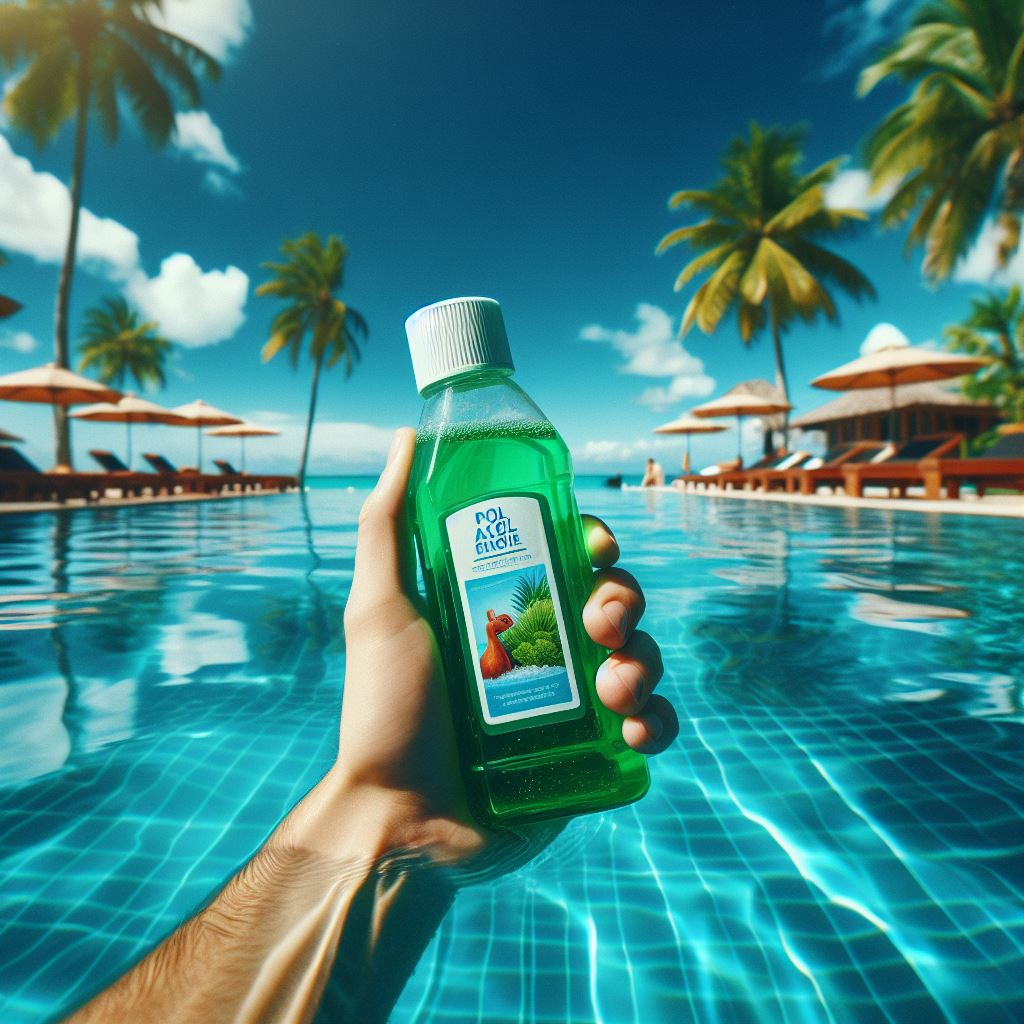Pool maintenance is a critical aspect of ensuring a clean and inviting swimming environment. Algae growth is a common challenge that pool owners face, requiring effective intervention for its prevention and elimination. In this detailed exploration, we will delve into the use of algaecides in the pool algae control cycle, covering various stages from prevention to treatment. Understanding the dynamics of algaecide application is essential for maintaining a pristine and algae-free swimming pool.

Understanding Algae Formation
Before delving into algaecide usage, it’s crucial to understand the factors that contribute to algae formation. Algae thrive in sunlight, especially in the presence of nutrients like phosphates and nitrates. Poor water circulation, inadequate sanitation, and imbalanced pH levels also create favorable conditions for algae growth. Recognizing these factors helps pool owners implement preventive measures
Preventive Algaecide Application
The first phase of the pool algae control cycle involves preventive measures. Applying algaecides proactively, especially before the swimming season or during periods of increased sunlight exposure, helps inhibit algae growth. Preventive algaecide treatments act as a barrier, disrupting the initial stages of algae formation and minimizing the likelihood of a full-blown algae bloom.
Routine Monitoring and Testing
To establish an effective algae control strategy, pool owners must regularly monitor water conditions and conduct routine testing. This includes assessing chlorine levels, pH balance, and the presence of phosphates and nitrates. Routine testing allows for early detection of potential issues, enabling timely adjustments to the pool water chemistry.
Algaecide Selection Based on Algae Type
Different types of algae may infest swimming pools, including green, yellow, and black algae. Each type requires specific treatment. Green algae are the most common and can be treated with general-purpose algaecides, while yellow and black algae may demand specialized formulations. Choosing the right algaecide based on algae type enhances treatment effectiveness.
Shocking and Superchlorination
In the event of an algae outbreak, shock treatment or superchlorination becomes necessary. This involves significantly increasing the chlorine levels in the pool water to eliminate existing algae and prevent further growth. Algaecides are often used in conjunction with shock treatments to provide a comprehensive solution to the algae problem.
Algae Brushing and Physical Removal
While algaecides play a crucial role in treating algae, physical removal is equally important. Regular brushing of pool surfaces helps dislodge algae clinging to walls and floors. Vacuuming the pool after treatment aids in removing dead algae, preventing their reintroduction into the water.
Proper Filtration and Circulation
Maintaining efficient filtration and circulation is vital for preventing and controlling algae growth. Algaecides work more effectively when the pool water is properly circulated and filtered. Ensuring that the filtration system is in good condition and optimizing circulation patterns enhances the overall efficacy of algaecide treatments.
Continuous pH Monitoring
Algaecides perform optimally within a specific pH range. Regular pH monitoring is essential to ensure that the pool water remains within the recommended levels. Algae control is compromised in environments with extreme pH values, making it imperative to address and correct any fluctuations promptly.
Post-Treatment Monitoring and Prevention
After successfully treating an algae outbreak, ongoing monitoring and preventive measures are crucial to avoid recurrence. Continued algaecide application, routine testing, and proactive maintenance help sustain an algae-free pool environment. Addressing any contributing factors promptly prevents the reemergence of algae-related challenges.
Environmentally Friendly Algaecides
In line with growing environmental consciousness, pool owners are increasingly opting for environmentally friendly algaecides. These formulations are biodegradable and less harmful to the ecosystem. Choosing eco-friendly algaecides aligns with sustainable pool maintenance practices.
Educating Pool Users
Educating pool users about the importance of proper hygiene and following pool rules contributes to algae prevention. Practices such as showering before swimming, avoiding the introduction of contaminants, and not urinating in the pool reduce the nutrient load, creating an environment less conducive to algae growth.
Consultation with Pool Professionals
For complex algae issues or persistent problems, seeking consultation with pool maintenance professionals is advisable. These experts can conduct a thorough assessment, recommend targeted solutions, and provide guidance on long-term preventive measures.
Conclusion
In conclusion, the pool algae control cycle involves a comprehensive approach, from preventive algaecide application to shock treatments and ongoing maintenance. Understanding the factors contributing to algae growth, selecting the appropriate algaecide based on algae type, and integrating physical removal and proper filtration are essential components of an effective algae control strategy. By following a systematic approach and staying proactive in monitoring and preventive measures, pool owners can maintain a pristine and algae-free swimming environment throughout the entire pool algae control cycle.

 Instant
Quote
Instant
Quote Email
Us
Email
Us